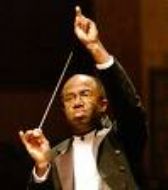|
Symphony
FROM THE NEW WORLD TO THE OLD WORLD
by Peter Lert
Saturday, June 14, 2025
Chamber
MC2 DUO RECITAL CLOSES 222'S SEASON
by Terry McNeill
Saturday, June 14, 2025
Choral and Vocal
CANTIAMO SONOMA'S LUSCIOUS A CAPELLA SINGING IN SEASON ENDING CONCERT
by Pamela Hicks Gailey
Sunday, June 8, 2025
Symphony
SRS SEASON ENDS WITH RESOUNDING TA-TA-TA-BANG
by Terry McNeill
Sunday, June 1, 2025
Symphony
YOUTHFUL VIRTUOSITY ON DISPLAY AT USO'S MAY CONCERTS
by Peter Lert
Saturday, May 17, 2025
Symphony
MYSTICAL PLANETS AND LIVELY GERSHWIN ORTIZ AT FINAL SRS CONCERT
by Peter Lert
Sunday, May 4, 2025
Symphony
VSO'S CONCERT MUSIC OF TIME, MUSIC OF PLACE
by Peter Lert
Sunday, April 27, 2025
VOCAL ELEGANCE AND FIRE AT THE 222'S RECITAL APRIL 26
by Pamela Hicks Gailey
Saturday, April 26, 2025
CANTIAMO SONOMA SINGS AN INSPIRED GOOD FRIDAY MOZART REQUIEM CONCERT
by Pamela Hicks Gailey
Friday, April 18, 2025
DRAMATIC SHOSTAKOVICH SYMPHONY CLOSES PHILHARMONIC'S 25TH SEASON
by Terry McNeill
Sunday, April 13, 2025
|
 |
 Conductor Michael Morgan |
LOUD AND BRASSY COPLAND IN MARIN
by Terry McNeill
Tuesday, May 5, 2009
Aaron Copland’s orchestral scores are so familiar as to seem old-shoe, even when his not-so-familiar Third Symphony dominates a program. Such was the case May 5 when the Marin Symphony performed an all-Copland concert in the Civic Auditorium in San Rafael.
The novel part of the program was at the podium, where seasoned East Bay conductor Michael Morgan substituted for the symphony’s ailing music director, Alasdair Neale. Nothing in the “Hoedown” from Rodeo or in the perennially satisfying suite from Appalachian Spring fazed Morgan, who led a thoroughly controlled performance characterized by moderate tempos and accomplished brass and wind sections.
“Hoedown” is a three-and-a-half minute romp that ends with a grand fanfare. It had all the pizzazz of a proper opening work. In contrast, the very slow beginning of Appalachian Spring exuded romanticism. Morgan’s beat was consistently clear and effective in balancing sections. Arthur Austin’s clarinet playing was elegant and frequently a gorgeous duo partner with other winds, the signature triad figure paced perfectly throughout. Trumpets (especially Cale Cumings) and trombones also thrived in the composer’s nostalgic harmonies and long-lined phrases, and percussionist Kevin Neuhoff was masterful.
At intermission, at least half of the large complement of musicians stayed on stage, madly rehearsing for the long Copland Symphony No. 3, which occupied the entire second half. The symphony, from 1946, demands a lot from musicians, and it is filled with echoes of Shostakovich and Mahler. Throughout the performance, Morgan evoked the expansive score’s dignity and heroism, but he never lost sight of delicate phrase endings in the string sections. He was in no hurry at any time, the tempos giving heft rather than edgy momentum.
Copland’s symphony is filled with loud, demanding music, as evidenced by the trumpets (played here by Principal Scott Macomber and James Rodseth), which lead contrapuntal lines and simply blaze away. In the final Molto deliberato some of the precision brass duos were not quite in sync, but perhaps stamina was at issue rather than any lack of musical commitment.
Special praise needs to go to Morgan and the violins for the lovely and seamless transition from the third to fourth movements. They proceeded deftly from often spare and ambiguous harmonies to the jazzy rhythms of the finale, a part crammed with more loud brass, wood-block syncopations and the familiar Fanfare for the Common Man theme. The orchestra moved through the two key changes and resounding percussion parts with aplomb.
The lengthy symphony didn’t seem long under Morgan’s deft direction, and the orchestra played with great energy, well deserving the standing ovation from a sonically overwhelmed but obviously thrilled audience.
|

